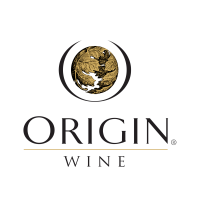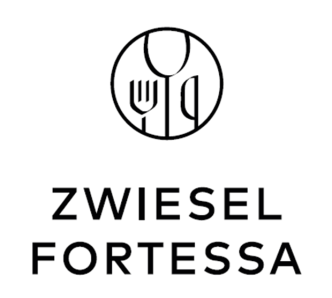Reviving an ancient method of making sparkling wine
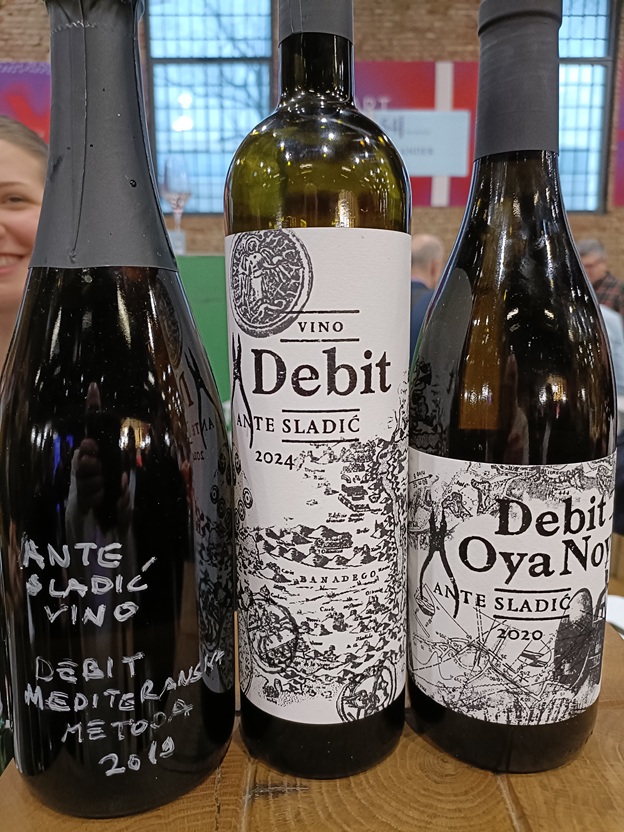
He calls it the Mediterranean Method. It’s scrawled on the bottle. It draws my attention to his stand at the Vinart wine fair in Zagreb.
Ante Sladić introduces me to a different way of making sparkling wines. It’s new to me but he explains it’s a twist on a very traditional method.
“It’s traditional method with the difference that we preserve the natural sugar from the grapes and use that for the secondary fermentation,” he explains.
Rather than picking the grapes early, when they may be underripe, he picks them “a little earlier than for regular still wine”. However, this means the finished wine would have too much alcohol if it was allowed to ferment fully before sugar and yeast were added for the second fermentation in bottle. So, they chill the must down to halt the fermentation.
“We stop fermentation when the sugar level is exactly at the level we need for secondary fermentation, so our goal is to leave 24g/L of sugar. I stop the fermentation by cooling. Everything else is the same as the classic method. I would say that this is actually a traditional or classic method adapted to the Mediterranean climate.
“The main reason I do this is so we don't force a premature harvest. This would normally have to be done to maintain low alcohol levels for sparkling wines in our climate. And this gives us the opportunity to harvest the grapes when they are in the ideal stage of ripeness, which ultimately results in a higher quality of wine. On the other hand, we don't have a problem with low acidity since the grape we use has an excellent pH, and the soil and microclimate in our area are very suitable for this style.”
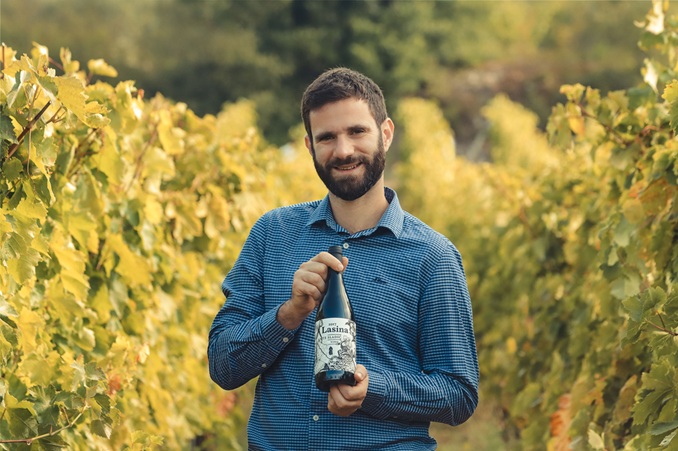
The grape variety is Debit (also known in Croatia as Pagadebit) – a white variety indigenous to Dalmatia.
Ante (above), who has taken over winemaking and vineyard duties from winery founder Marinko Sladić, believes it is ideal for sparkling wines. He tells me: “Debit always has a low pH, which is crucial in the production of sparkling wines. It also has excellent minerality, which it draws from our unique soils. Our soil was formed some 70 million years ago under the influence of the sea, which created the limestone, and Debit is the one that best expresses this terroir.
“Debit even has a tradition of producing sparkling wine in our area, which was produced more than 100 years ago.”
The other main difference with this traditional method is that the second fermentation is initiated earlier than normal. “We have to go into secondary fermentation earlier because we still have sugar in the wine and that brings certain risks,” Ante explains. “Secondary fermentation, therefore, begins in November and this is again something that affects the organoleptic of the wine.”
The wine is left for four years on lees before disgorging. The 2019 that I tried at Vinart is the first release. The wine from the warmer 2020 was released recently.
Taming tannic grapes
Two of Croatia’s best-known red varieties are high in tannins. However, creative producers are countering this with some interesting winemaking. Here are two inspiring examples.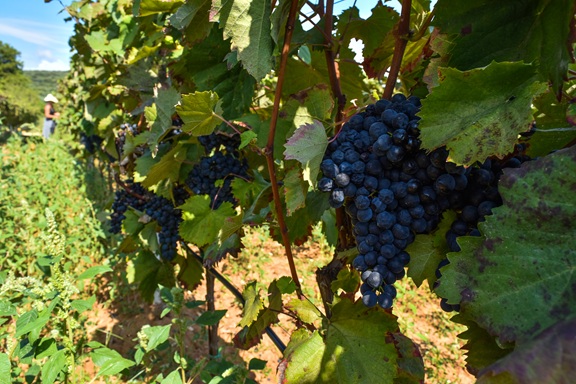
In the beautiful northwest corner of Croatia, Teran is Istria’s flagship red grape. Wines tend to range from garnet red to purple with high tannins, anthocyanins and extract, and above-average acidity. Alcohol levels can range from 11-14% ABV.
Damir Dobravac, who took over the family farm in 1994, has found an interesting way to tame those tannins. He dries about 30% on the vine (above). His Fuga wine, from a 7.5ha vineyard near the beautiful town of Rovinj, is probably the best Teran I’ve tasted.
Damir explains the key differences to other Terans:
- Between 2-2.5kg of grapes per vine.
- One month of drying on the vine itself for 20-30% of the grapes.
- Destem the bunches and slightly crush the berries.
- Macerate the grapes for a month, including fermentation.
- Age for two years in French oak barriques (some new for the latest release, 2020) and another six months in bottle before going on sale.
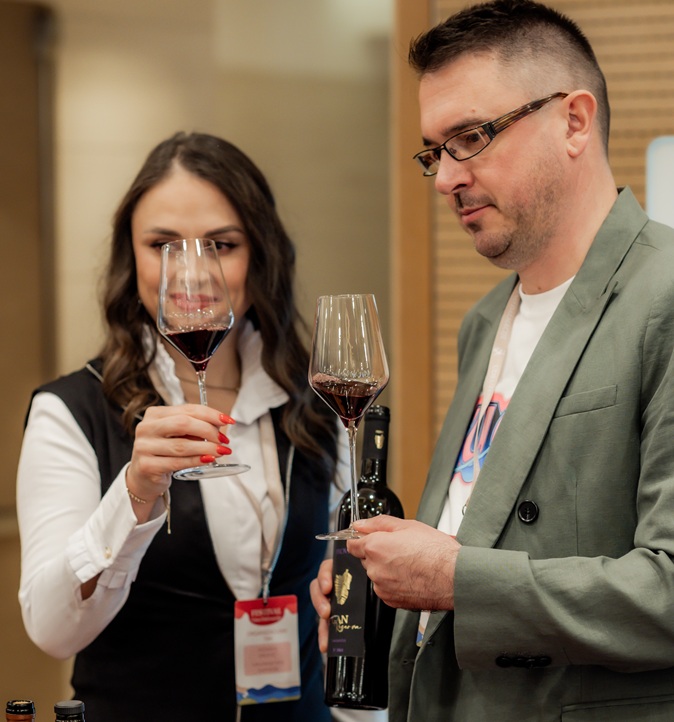
The primary red grape grown along the Dalmatian coast is Plavac Mali. It is known for producing rich, powerful wines that are high in both alcohol (typically 13-17%) and tannins.
Plavac Mali is a challenge for winemakers as the ripening is often uneven and, if left to ripen fully, the tannins and sugars increase while the acids drop.
Prović, a family-run winery located in Opuzen, within the Neretva Delta, offers the softest red featuring Plavac Mali that I have tasted so far. Branko Prović and son Vjeko (above, with sister Monika) put their Plavac in American oak and blend it with a super-soft Merlot. The Pagan Reserve that I tasted at Vinart – the 2019 vintage – is a blend of 50% Merlot (which has been dried for 30 days), 30% Plavac Mali and 20% Cabernet Sauvignon. The Merlot and Cabernet Sauvignon are aged for two years in used French barriques while the Plavac goes into American oak.
The wine spends a year in bottle before release.
Alcohol is 15%, residual sugar 3g/L, and acidity 5.6g/L.
Hidden gems with potential
Croatia, a country located on the Adriatic coast, has a rich history of winemaking, going back more than 2,000 years. As the country’s wine culture continues to grow and evolve, the spotlight is turning on its indigenous grape varieties, many of which are relatively rare and unknown outside of Croatia. Among my favourite varieties are Škrlet Žuti, Maraština, Pošip, Grk, Lasina, and Svrdlovina.These rare grape varieties offer distinct flavours and character.
- Škrlet Žuti is Croatia’s floral and fruity white gem. A rare white grape variety indigenous to the Continental part of Croatia, it is sometimes referred to as Croatia’s Sauvignon Blanc. The name “žuti” (yellow) refers to the grape's golden hue when ripe. These wines tend to have a lighter body, with flavours of green apple, lemon zest, and a distinct minerality. A great example is Voštinić-Klasnić’s Unikat 2023.
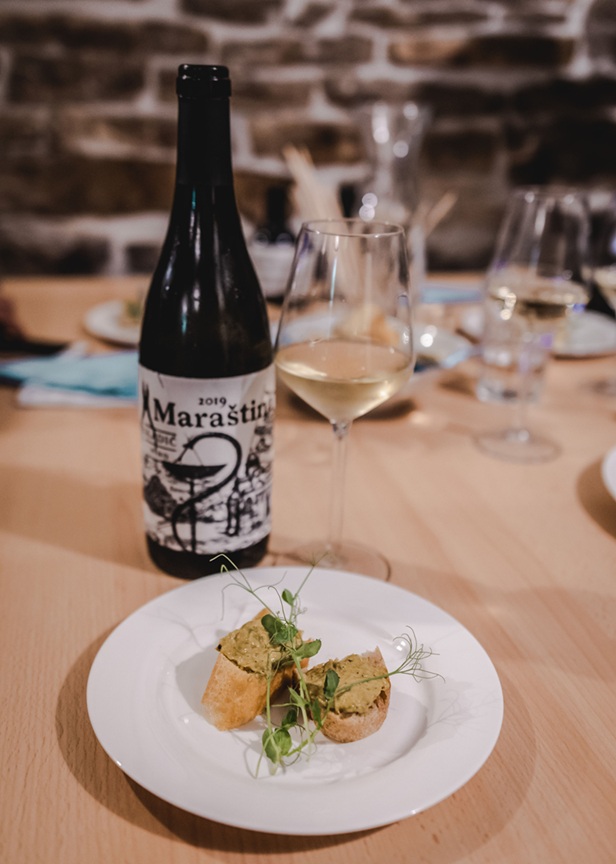
- Maraština is often considered the Croatian counterpart to Italy’s Vermentino or Spain’s Macabeo. It is a native white variety found throughout Dalmatia. Around Šibenik and Skradin it was considered a medicine and, 90 years ago, you could buy it in pharmacies. In Italy, it’s called Malvasia del Chianti or Malvasia Bianca Lunga in Italy and in Greece it goes by the name Pavlos. Wines made from Maraština are typically aromatic and dry, with floral and herbal notes, balanced acidity, and flavours of citrus, green apple, and sometimes a touch of almonds or Mediterranean herbs on the finish. The grape’s high resilience to the coastal climate makes it ideal for the Dalmatian region’s sunny, dry conditions – and could give it wider appeal in Mediterranean climates. I like its versatility – it can produce both young, fresh wines as well as more complex, barrel-aged styles. My favourite versions include Bora Maraština 2023, Baraka Maraština Tenebra 2022, and Ante Sladić Maraština 2023 (above).
- Pošip is Croatia’s darling white grape. Another notable white variety from the Dalmatian islands, particularly Korčula, it is one of the few Croatian varieties that has already gained international recognition. Pošip wines are known for their full-bodied structure, with vibrant acidity, notes of ripe fruit like peach, and a rich, sometimes honeyed finish. The wine’s relatively high alcohol content, combined with its fruitiness and mineral complexity, makes Pošip a versatile pairing with a wide variety of foods, including seafood, grilled meats, and even some cheeses. Top versions tasted this year include Grgić Pošip 2023 and Hvar Hills Pošip Surreal 2022.
- Grk is a rare white grape grown on the island of Korčula – thriving in the island’s sandy, rocky soils. It produces full-bodied wines that are dry and often characterised by their intense mineral notes, coupled with floral aromas and citrus flavours, often with an intriguing almond finish. The wine has the rare ability to be both fresh and rounded, making it one of the most complex white varieties in Croatia. My favourite is the lees-aged Zure Grk Revention 2022.
- Lasina, a relatively unknown red grape variety from Dalmatia (mostly in Šibenik-Knin county), has garnered attention due to its potential for high quality and its relatively high resistance to disease. They call it Dalmatian Pinot Noir because of its light colour, low tannins, elegance and high quality. Despite its small production, Lasina has shown promise in producing wines that are elegant with good acidity and tannin structure. My favourite is the Ante Sladić Lasina 2020.
- Svrdlovina is a truly rare and almost enigmatic grape variety found primarily in the Slavonia region. Limited production and a lack of in-depth research into its full potential make Svrdlovina one of the most mysterious grape varieties in the country. The wines are described as elegant, with moderate tannins and flavours of wild berries, herbs, and subtle spice. A recommended example is Bora Svrdlovina 2022.
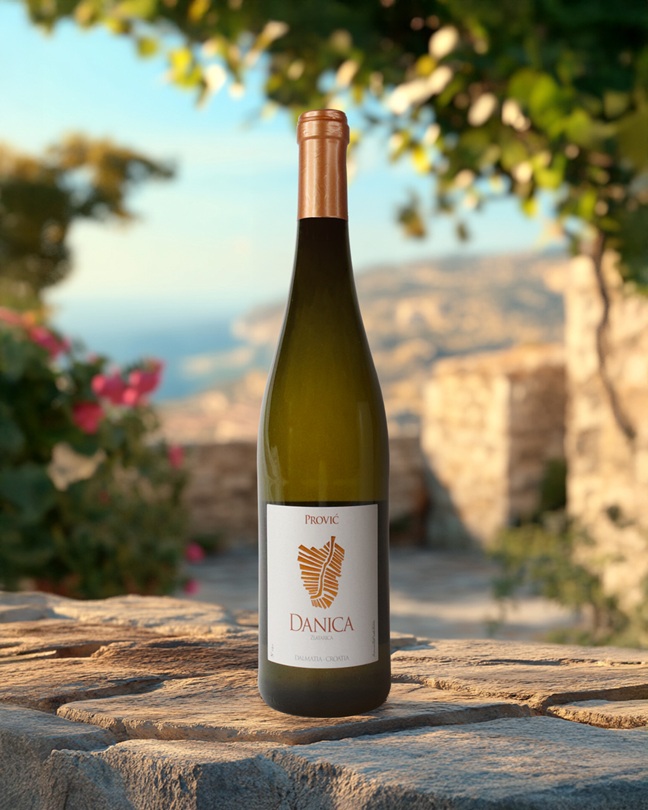
The most exciting versions seem to pair rare grapes and creative winemakers.
One superb example is Danica 2022 (above) from the Prović family. They have taken the rare Zlatarica variety, which is indigenous to the small Neretva and Vrgorac winegrowing regions, hand-harvested the best bunches, put them in a used acacia barrel, without pressing, and left them to ferment spontaneously and burst open on their own. After 100 days of skin contact, the wine was racked to another barrel and left for a year with regular bâtonnage.
Alcohol is 11.7%, residual sugar is 1.7g/L, and acidity is 5.7g/L.
The name Danica symbolises the planet Venus, which is known in Croatia as the Danica star – but it is also the name of Vjeko Prović’s grandmother, who brought the land the vineyards were planted on as dowry when she married.
A long tradition of winemaking, creative winemakers, beautiful vineyards and fantastic indigenous grapes – this is what brings me back to Croatia every year.


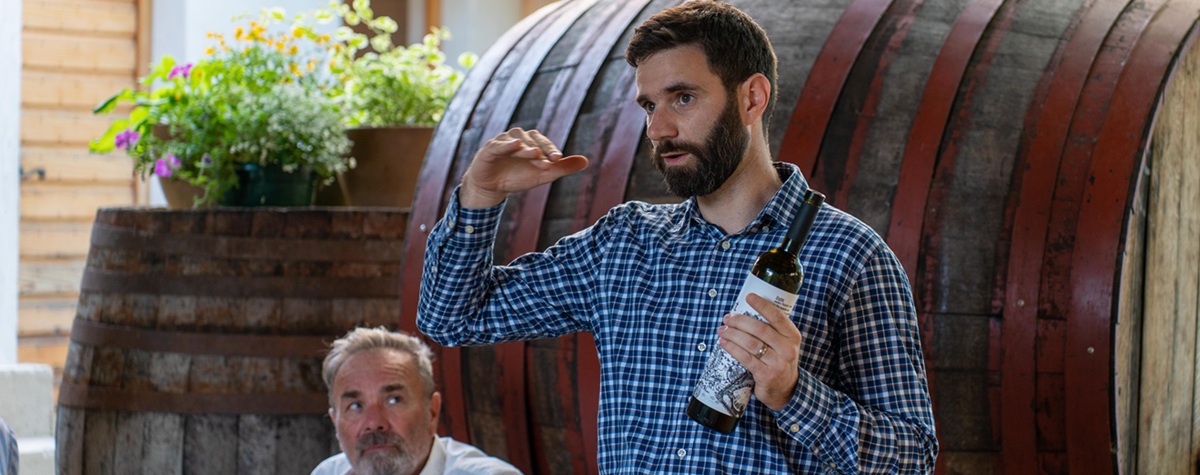









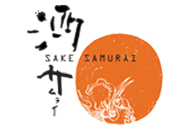
.png)



